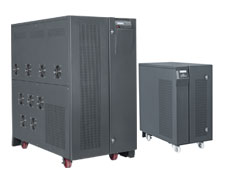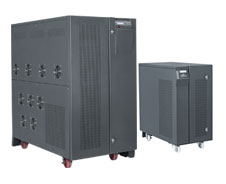We've all seen the new Volkswagen advert in light of the familiar saying of 'purchase modest, purchase two times' however what several server farm directors respect the batteries inside their UPS frameworks as a parachute or wellbeing rope? The truth of the matter is that the uninterruptible power supplies used to safeguard IT offices and the basic power ways to which their servers are associated are just comparable to the batteries inside them.
Numerous server farms utilize the Uptime Institute's Tier-rating framework to group themselves into one of four levels for strength. Level 1 is the most reduced and Tier 4 is the most elevated with different overt repetitiveness. A Tier 1 office will have an independent UPS and battery framework. A Tier 4 office will have two main power supplies (An and B), each safeguarded by an equal UPS, battery, and backup power generator frameworks.
Inside any of the Tiers and UPS designs, the batteries will be the most fragile connection and one that the Uptime Institute still can't seem to address as far as guidelines including testing and checking.
Batteries, similar to some other consumable thing change in quality. Very frequently UPS frameworks are bought on cost and specialized details like impression, working proficiency, kVA/kW result, and battery runtime. Not many clients ask which brand of battery is utilized. Less actually determine a finish of life runtime esteem or request battery testing to be incorporated inside a yearly safeguard support visit.
Moreover, modest UPS batteries are accessible 100% of the time from less notable Far East-based producers giving some UPS providers the capability of a cost advantage while pitching for another UPS framework however one that a client could find disappearing rather rapidly.
Most UPS batteries have a 5 or ten-year plan existence with substitution anticipation around years 3-4 or 7-8 separately. The straightforward reality is that batteries age whether or not they are utilized. The age of electrical power in a battery is down to a compound cycle and connection among positive and negative plates (typically produced using Lead) and an electrolyte.
Batteries self-release with no electrical charging framework set up and can't be left away for longer than a half year. Being used batteries require a 20-25degree Centigrade encompassing climate guarantee they meet their presentation and battery duration determinations. Curiously, the higher the temperature the better the presentation however the faster plan life falls. For each 1-degree ascend around 30, plan life parts. Battery execution additionally improves from the very first moment of an establishment after 2-3 battery charge/release cycles yet the general circulation bend is non-straight and tumbles off the closer the battery is to its plan life.
Presently UPS makers, as well as putting resources into working on functional proficiency, impressions, and costs additionally advance superior battery the executive's usefulness. This for the most part implies a temperature remunerating charge, rest mode in their charging capacity (permitting the UPS batteries to self-release to a 'safe' characterized level), and complex calculations that screen robotized battery tests.
The reality however is that 80% of UPS disappointments are down to a bombed battery set and one that the inside battery testing couldn't distinguish. A side note here is to continuously associate your UPS to a checking arrangement, regardless of whether this is using SNMP, SMS modem cautions, or a structure of the executive's framework (BMS). There isn't anything more regrettable than becoming aware of a UPS in a cellar or plant room that was disturbing (revealing a bombed battery test for instance) and no move being made because nobody was checking the UPS or heard the discernible caution.
The calculations utilized inside UPS battery testing just test the general battery set wellbeing and DC voltage. Most UPS battery sets have at least one battery strings that would themselves be able to have up to 40 individual batteries.


















